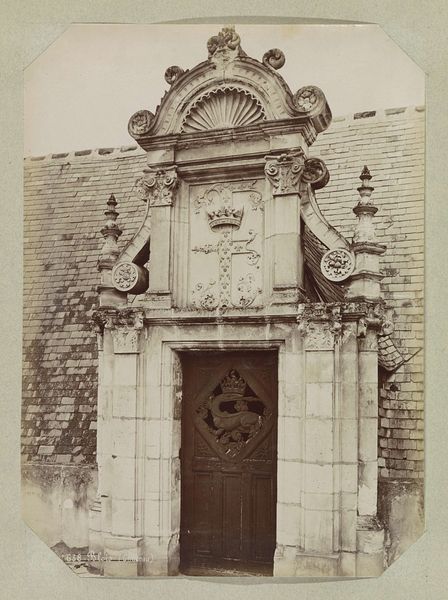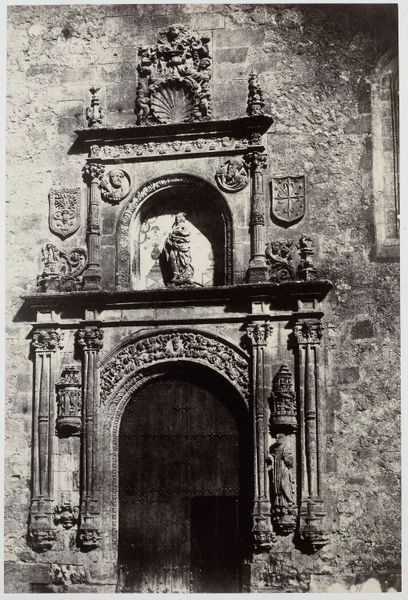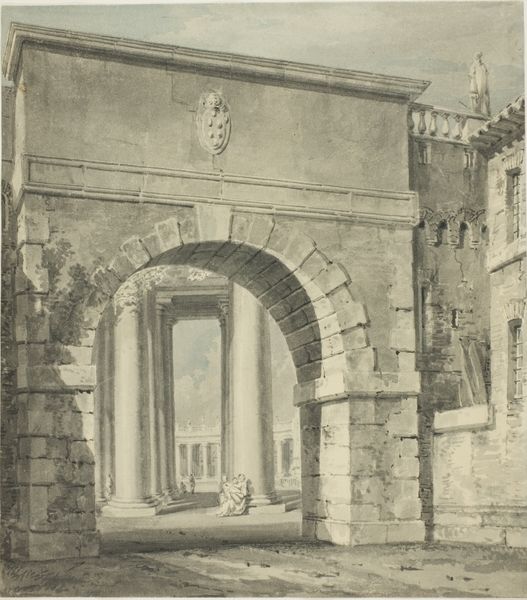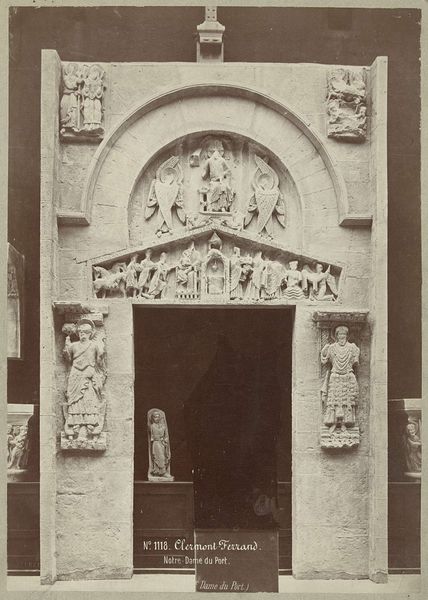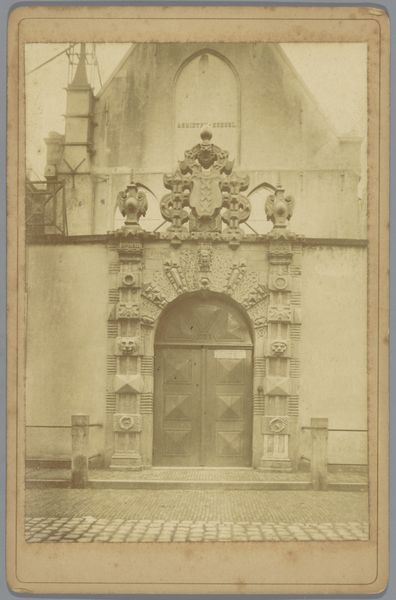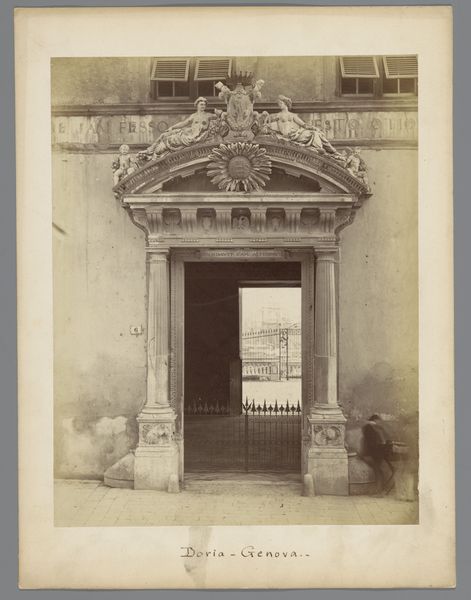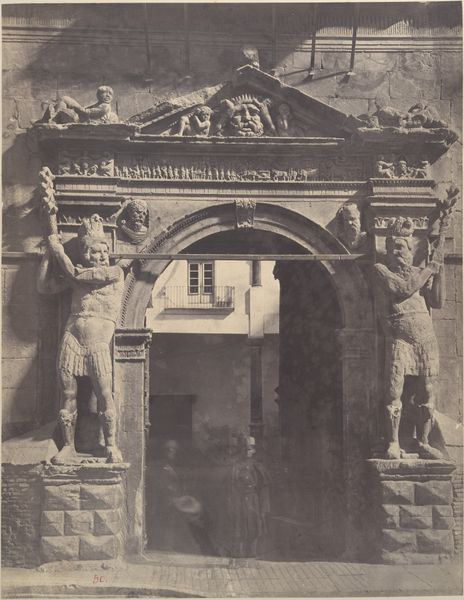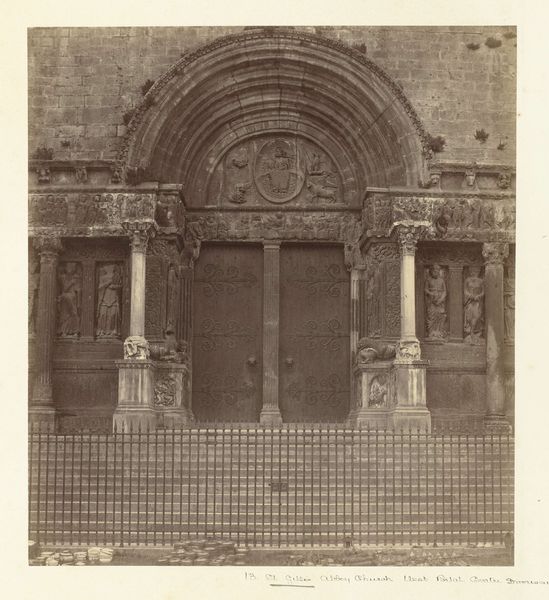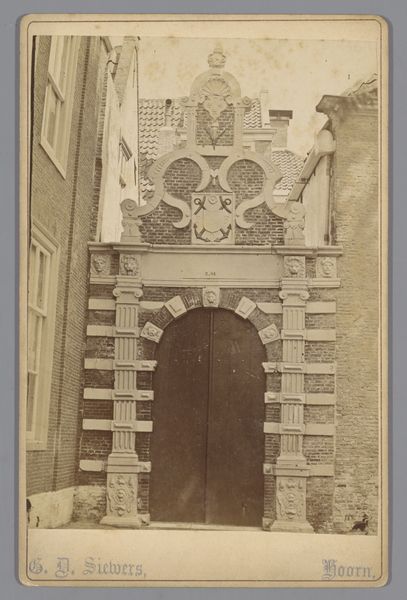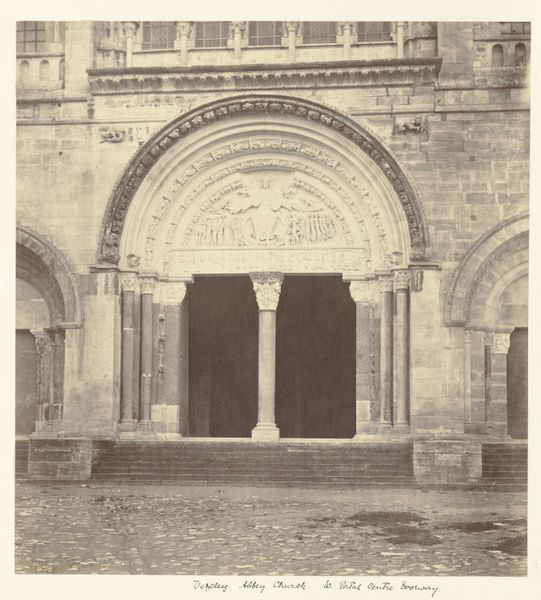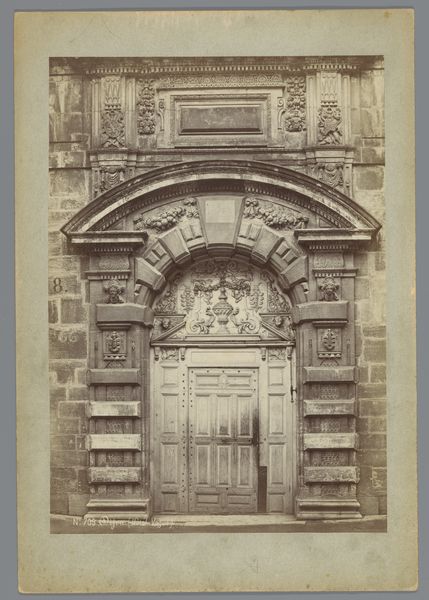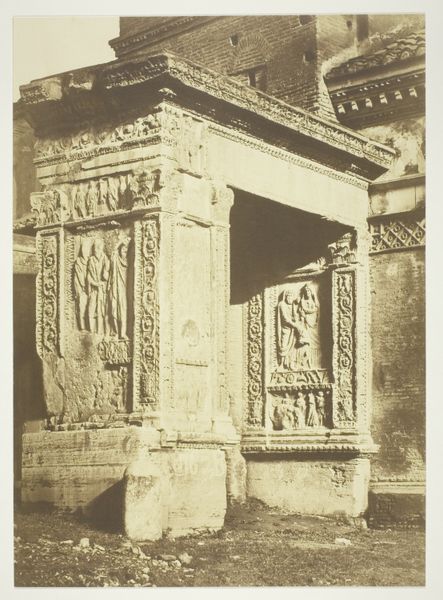
Poort van de Vergeving (Puerta del Perdon) van de kathedraal van Sevilla c. 1860 - 1880
0:00
0:00
#
aged paper
#
photo restoration
#
colourisation
#
historic architecture
#
traditional architecture
#
unrealistic statue
#
old-timey
#
19th century
#
watercolor
#
statue
Dimensions: height 295 mm, width 230 mm
Copyright: Rijks Museum: Open Domain
Editor: This photograph, "Poort van de Vergeving (Puerta del Perdon) van de kathedraal van Sevilla," was taken by Emilio Beauchy sometime between 1860 and 1880. I’m struck by the contrast between the ornate doorway and the ordinary people gathered around it. What sort of story does the image tell, beyond just documenting architecture? Curator: It's a powerful intersection, isn’t it? Consider the door itself, the "Puerta del Perdon"—the Door of Forgiveness. Note the horseshoe arch, a clear Moorish influence retained even after the Christian reconquest of Spain, now part of the Seville Cathedral. This photograph is not just about a door, but about the layering of cultures and beliefs. The very stone whispers of forgiveness, doesn't it? Editor: Yes, absolutely. I also notice the figures flanking the doorway—angels and prophets, almost frozen in stone, which feels dramatically different from the humans. What significance might that hold? Curator: Precisely. Those figures, eternal and idealized, stand in stark contrast to the transient nature of the people below. Consider the figures lounging and observing around the Doorway; their postures exude the attitude of everyday life. Beauchy captured this contrast, perhaps unknowingly, maybe not; they’re temporal, while the stone figures represent enduring principles of faith and judgement. What feeling does this evoke within you? Editor: It creates a feeling of… accessibility, I think. Even something as grand and imposing as the Door of Forgiveness is ultimately just a part of the human experience, rather than some unreachable ideal. Curator: Indeed. The photograph collapses the sacred and profane, reminding us that forgiveness, despite its lofty symbolism, operates within our messy, human world. Beauchy invites us to contemplate how we interact with these symbols. Editor: I see what you mean. Thanks to this photo and your help, I've gained a richer understanding of how symbols can carry deep and sometimes contrasting layers of meaning. Curator: And hopefully a newfound appreciation for the narratives architecture quietly whispers across centuries.
Comments
No comments
Be the first to comment and join the conversation on the ultimate creative platform.
